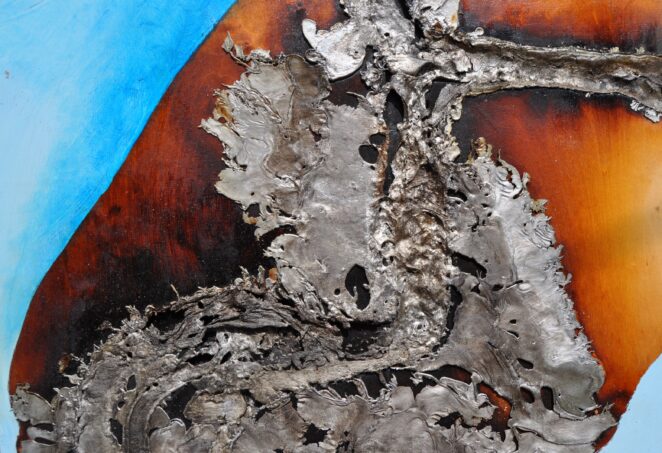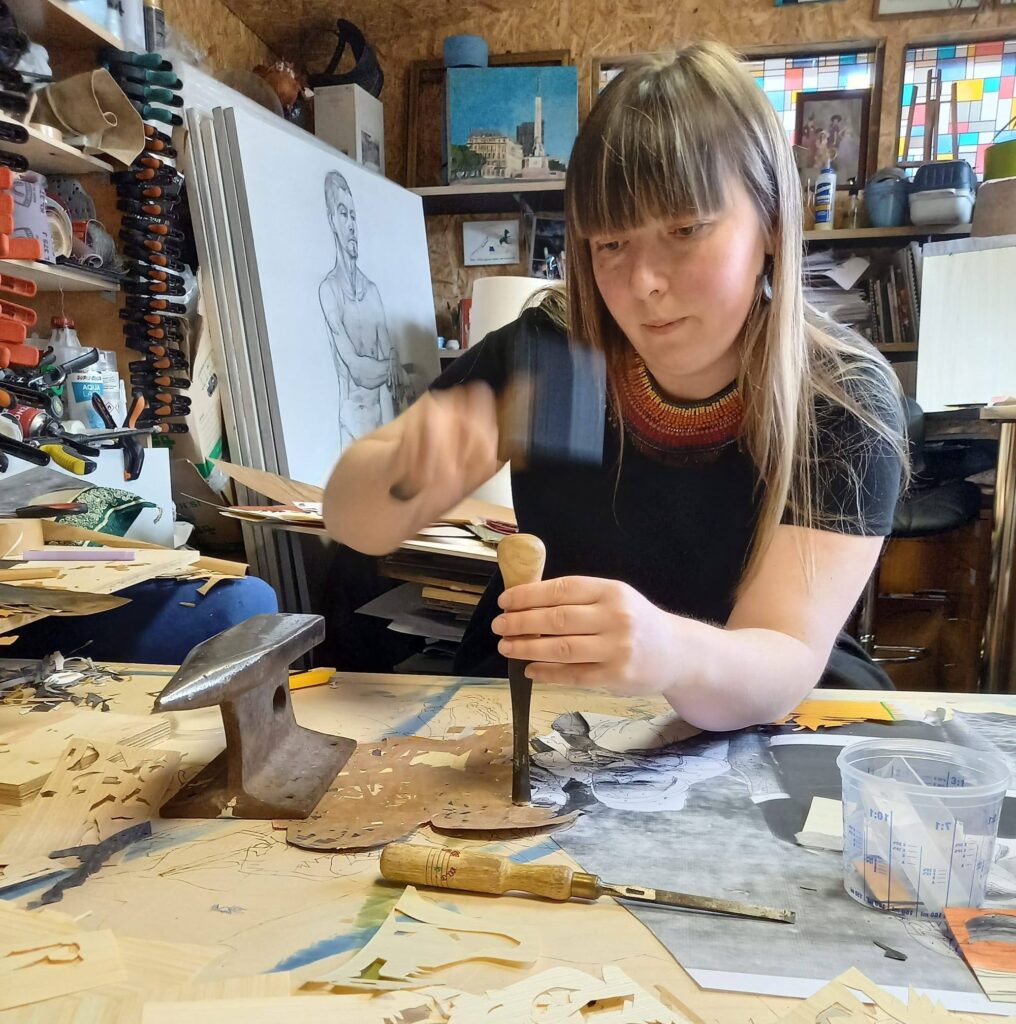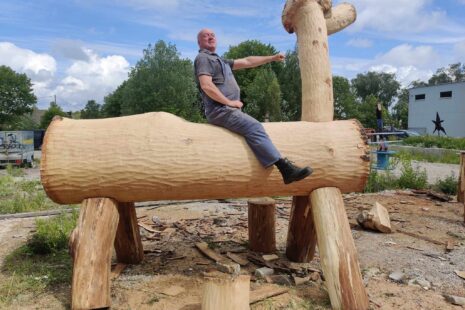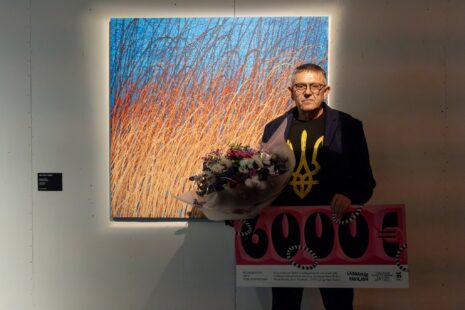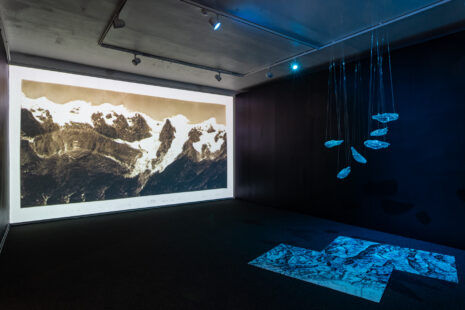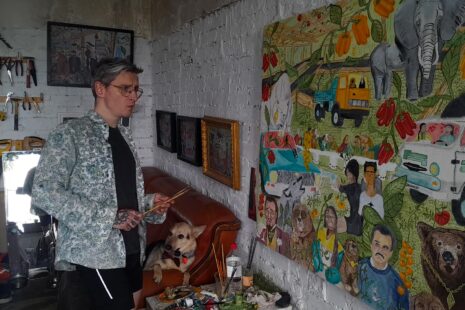What do you think, in the case of this kind of contest, is the taste of the audience somehow different from the official jury’s?
Can look in two ways on the meaning of the word „taste”: it is a sense of beauty, an aesthetic understanding; and it is what one considers appropriate and desirable. Such a basic understanding of taste, likely leads to an answer for this question: there are people who enjoy art and feel it, but are not educated in this field – basic taste –, and there are people who have this natural feeling plus the knowledge – supertasters.
Latvians have a saying about taste: „won’t argue about taste – for one likes the mother, another likes the daughter, but somebody else likes the dress”!
Your work “I’m on the goat” got 80 votes out of 1695. What could be the phenomenon of this motive? Is it the combination of a cute baby and an animal that melts the hearts?
First of all, I really appreciate those people who voted for my works – thanks go to them! It must be acknowledged that there was a lot of choice for what to vote for, especially as the various disciplines were brought together in this competition. When there is so much variety in choice, the first visual impression is important, followed by the artwork description and technique.
I think people voted for my work of art by seeing in it the core values – family, children, animals.
Besides this particular work you had many others – your diploma work “Wood. Memories. Contemporary wood veneer marquetry” was inspired by the childhood photos which you found in your parents photo albums. You wanted „to get the viewer’s revelation, that the value is in tangible, not virtual photographs.” How did you succeed, which has been the feedback?
It has been really wonderful since the creation of my diploma work in the technique of marquetry. Can be said – I have been noticed! This summer, due Covid-19 restrictions in the country, I hosted private exhibition in the home garden. It was visited be Kristaps Zariņš, rector of the Art Academy of Latvia; Miķelis Fišers, lector and diploma viewer; Jānis Zirnis, Honorary Principal Conductor of the Latvian Song Celebration and choir „AUSMA” singers; Kārlis Streips, Latvian radio and television journalist; relatives, friends and local people.
In the autumn, there was an opportunity to exhibit my artworks at „PILOT”, Art Academy of Latvia’s Experimental Art Space, and afterwards in Lithuania at ArtVilnius’21, Eastern European Contemporary art fair. The feedback is positive: audience admires the technique and visual effect of artworks, similarity with photographs, work accuracy and my patience.
Many viewers of the artworks took photos with the phone – but the question of whether they will develop them on tangible photo paper is still relevant. The very idea and the desire to create a revelation in the viewer about the value of photography has worked – at the level of thought – people remember those times and those many, themed photo albums.
Looking at my works from a distance, viewers saw them as copies of photographs, but looking closer – they saw all the little details – that really fascinated them, creating a double effect.
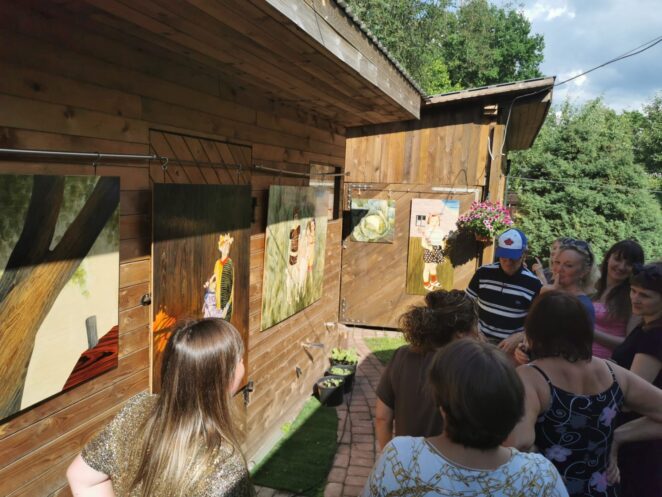
Another work from that series is portraying a cabbage, the only one from the photos you clearly remember. You „came to the conclusion that maybe the Latvian nation has survived thanks to cabbage.“ Could you open up that a bit?
My childhood memories are foggy, but the episode, where I collect the big, green cabbage worms from cabbage leaves in the countryside furrow, has remained even in my senses.
Hearing this question about cabbage portraying, it seemed to me that it was about a portrait of cabbage. I must say, that would not be far from it, because the title of the artwork is „The Beginning”. You see, in the Latvian Soviet Socialist Republic times, it was not accepted to talk about where, physiologically, children come from: they were brought by a stork or found in the cabbage. Since I am a „product” of the Soviet era, I was found in a cabbage. This cabbage is me or anyone else, born in these times.
In essence, cabbage is an excellent and tasty vegetable, rich in vitamins and amino acids. It’s stored for a long time under the right conditions. Thirdly, in Latvian slang, „cabbage” means money.
Thus, this marquetry is not simply a representation of cabbage, but also includes symbolism – birth, food, money.
The technique of the series is called marquetry – applying pieces of veneer to a structure to form decorative patterns, designs or pictures – and you consider the process time consuming, giving an opportunity to think and reflect. In this sense, is it more similar to an area of painting or sculpture in which you both have a master’s degree?
Marquetry is a technique used in crafts. It is rare today among the masters, who still do it, as well as people who develop the photos they take. My artworks are based on carpentry techniques: sawing, cutting, veneering, glazing, gluing, grinding, polishing – in combination with painting techniques: shape modulation, sense of color, proportions, stylization, spatiality. By creating these works, they gradually are glued with paper tape from the surface, this means that the entire end result must be predicted in the head, before starting the work, as it is possible to see only the left side of the work – where the wood stain is not visible.
Yes, the process of the work is, indeed, time consuming. At this artwork „I’m on the goat”, I worked for two months daily. When the creative part of the work – the idea – is invented and the process of the work is planned, then it is left to start creating, which in this case is technical manual work. It gives me the opportunity to spend time quite meditatively with myself alone and to think.
This technique is not entirely similar to painting or sculpture. But in my senses, I feel that marquetry is more like sculpture, because the brain’s thought process is structured, gradual, time consuming, based on hand dexterity/workout, eye accuracy. Painting, on the other hand, is a more intense thought process, in the sense that the painter has to follow reality and can’t be absorbed in reflection, memories. In sculpture, it all starts with an idea, then a sketch, the making of a carcass frame, welding, putting on a volume of material mass and modeling, casting in the material and post-processing. Similarity lies in the diversity of the work process.
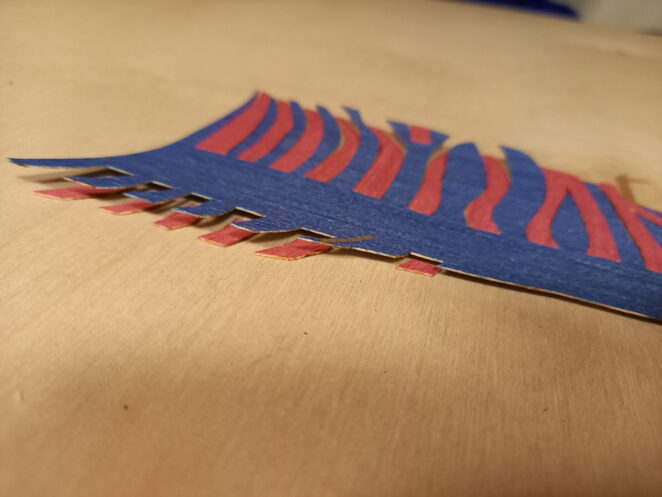
Those degrees come from the Art Academy of Latvia, which is a „home-university“ for another NBYAA winner, Madara Kvēpa, too. Is this rather a coincidence or a result of a high-quality study program? How would you compare your academy to other academies around the area?
Madara Kvēpa, who won the title of NBYAA the best Young Painter is a talented and versatile, purposeful young artist. Would not like to think that it is a coincidence, either. Art Academy of Latvia’s study programs are well thought out, the professors, who teach there are brilliant professionals in their fields, ready to give advice and transfer their knowledge to students. I think it’s a combination of a person with his or her own talent and work on it plus the level of education.
I haven’t had an experience in Estonia’s, Lithuania’s and Finland’s art academies yet, but I have experienced studies under the leadership of the rectors – Aleksejs Naumovs and Kristaps Zariņš. Since the existence of the Art Academy of Latvia, the professors here have worked with outstanding artists, who have also entered the history of art.
I must say that these people make you think – and think a lot, not just to create!
You have said that you’re more practical than a theoretical artist, but you also like the stories. Which kind of story are you going to tell next in your art and with which tools?
One day, in the attic of my parents’ house, where there are various books and belongings, I found a box. Box with my childhood toys – I think, it could be a good material for the story. A story which will lead to the next series of marquetries – „Wood. Memories. Contemporary wood veneer marquetry. (Childhood shots/footage) – 2”.
I have an aluminum casting in mind, too. Next summer, I want to work on it. I have an experience working with combined technique paintings – paint, aluminum, wood; as well as pure aluminum sculptures. I want to use my sculptor’s skills.
